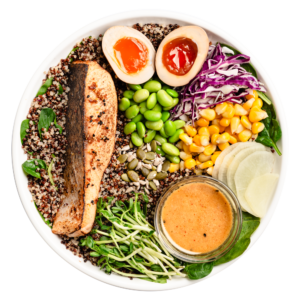Chronic diseases such as heart disease, type 2 diabetes, and digestive disorders continue to rise globally, often linked to poor diet and sedentary lifestyles. While many factors contribute to long-term health, one simple yet powerful element often goes overlooked—dietary fiber. Found naturally in plant-based foods, fiber doesn’t just support digestion; it plays a protective role against some of the most common chronic illnesses affecting people today. Understanding its benefits and incorporating it into your daily meals can make a significant impact on your long-term well-being.
Despite its proven benefits, fiber is one of the most under-consumed nutrients in modern diets. According to global dietary surveys, the average person consumes far less than the recommended 25–38 grams per day. So why does fiber matter so much, and how can you make sure you’re getting enough—especially in a way that’s both convenient and delicious?
Let’s take a closer look.
What Is Dietary Fiber?
Dietary fiber refers to the parts of plant foods that your body can’t digest or absorb. Unlike fats, proteins, and carbohydrates, fiber isn’t broken down and absorbed by the body. Instead, it passes relatively intact through your stomach, small intestine, and colon.
Fiber is typically categorized into two types:
- Soluble fiber, which dissolves in water and forms a gel-like substance. It helps lower blood cholesterol and glucose levels.
- Insoluble fiber, which adds bulk to the stool and helps food pass more quickly through the stomach and intestines.
Both types are essential for optimal health.
How Fiber Helps Prevent Chronic Diseases
1. Supports Heart Health
Soluble fiber has a proven track record in reducing LDL (bad) cholesterol levels. It binds to cholesterol particles in the digestive system and helps remove them from the body before they can enter the bloodstream. Studies have shown that increasing fiber intake—particularly from whole grains, legumes, fruits, and vegetables—can significantly reduce the risk of cardiovascular disease.
2. Regulates Blood Sugar
Fiber, especially soluble fiber, slows down the digestion and absorption of sugar, preventing sharp spikes in blood glucose levels. For people with type 2 diabetes, a high-fiber diet can improve glycemic control. For everyone else, it can help reduce the risk of developing insulin resistance and diabetes over time.
3. Aids in Weight Management
Fiber-rich foods are typically more filling and less calorie-dense. That means they help you feel fuller for longer, naturally curbing appetite and reducing the likelihood of overeating. In fact, people who eat high-fiber meals tend to consume fewer calories overall, which can support sustainable weight management and reduce the risk of obesity.
4. Promotes Gut Health
Insoluble fiber adds bulk to the stool and promotes regular bowel movements, which helps prevent constipation and supports a healthy digestive tract. Meanwhile, certain types of soluble fiber act as prebiotics, feeding the beneficial bacteria in your gut. A balanced gut microbiome is closely linked to improved immune function, reduced inflammation, and even mental well-being.
5. May Lower Cancer Risk
There is emerging evidence that a fiber-rich diet may help lower the risk of certain types of cancers, particularly colorectal cancer. Fiber speeds up the passage of waste through the digestive system, reducing the time harmful substances stay in contact with the intestinal lining.
Getting More Fiber into Your Diet
Adding more fiber to your meals doesn’t have to be difficult. Start with small, consistent changes like:
- Swapping white rice for brown rice or quinoa
- Choosing whole grain bread over white bread
- Adding legumes to salads or soups
- Snacking on raw veggies, nuts, or fruits
- Exploring plant-based bowls loaded with whole ingredients
Build Your Own High-Fiber Bowl at SaladStop!
If you’re looking for a quick, tasty, and customizable way to boost your fiber intake, SaladStop! has you covered. With our Create Your Own (CYO) bowl option, you can load up on fiber-rich ingredients like kale, broccoli, chickpeas, red quinoa, lentils, chia seeds, and more.
Whether you’re aiming to support heart health, manage blood sugar, or simply improve digestion, our CYO bowls let you take control of your nutrition—without sacrificing flavor. Start crafting your perfect high-fiber meal today by visiting our Create Your Own Bowl page and exploring the wide range of wholesome, plant-powered ingredients available.
Incorporating more dietary fiber into your daily routine is a small change with powerful long-term health benefits. From protecting your heart to keeping your gut microbiome thriving, fiber plays a vital role in disease prevention and overall wellness. By making fiber a consistent part of your meals—whether at home or with a nourishing bowl from SaladStop!—you’re investing in a healthier, more resilient future.




